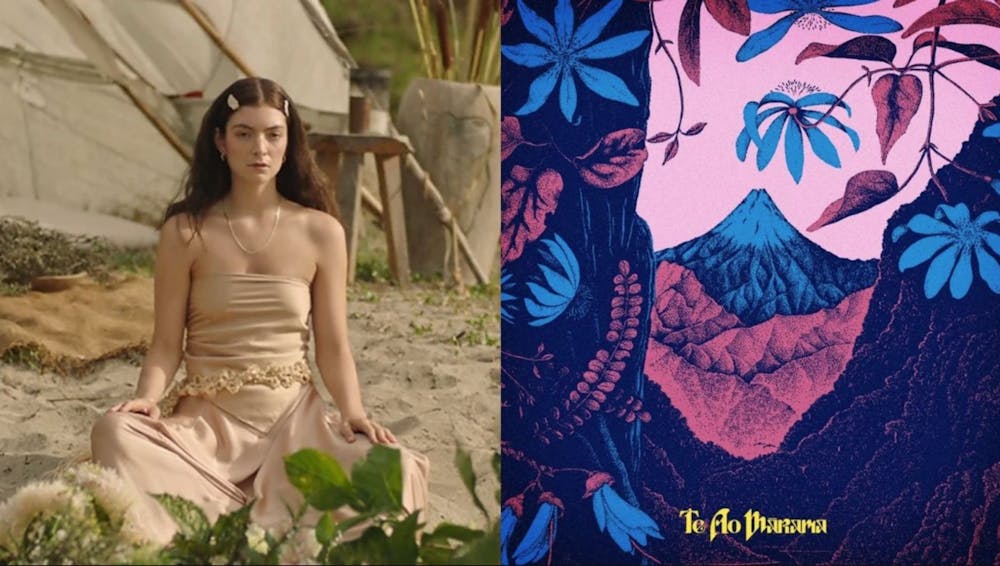Fresh off the release of her third studio album, “Solar Power,” Lorde surprised fans by dropping a surprise EP, “Te Ao Mārama” Sept. 9. The EP features five songs from “Solar Power” recorded entirely in te reo Māori, the indigenous language of the Māori people of New Zealand. Though the singer does not speak te reo Māori, in a statement, she said that she created this version to honor the theme of “caring for and listening to the natural world” prevalent in “Solar Power.” Lorde, who is not Māori, credits the Māori culture for creating the spiritual and nature-focused “worldview” that all New Zealanders grow up with.
In a newsletter to fans, the singer described herself as someone “who represents New Zealand globally” and expressed her desire to promote aspects of Māori culture that help make New Zealand such a unique place. She released the EP shortly ahead of New Zealand’s Māori Language Week, also known as Te Wiki o Teo Reo Māori, which aims to celebrate te reo Māori and encourage its prominence within modern-day New Zealand. Despite being New Zealand's “first language,” te reo Māori has historically been marginalized and erased in favor of English. Due to concerns of the language “dying out,” there have been more recent initiatives to revive the language across New Zealand.
Due to this complex history, the release of a te reo Māori album by a non-Māori singer has been met with mixed opinions. Māori face systemic oppression within New Zealand and have often been discriminated against for speaking te reo Māori in the past. As a result, many Māori people were raised without learning their culture’s language and continue to face difficulties in accessing learning resources today. Though she will be donating all proceeds from the EP, to some with this experience, Lorde’s use of te reo Māori in her album comes across as disingenuous “tokenism” rather than “advocacy for the language.” Many viewed “Te Ao Mārama'' as being another example of a white person using one aspect of Māori culture while ignoring the vast history of discsarimination, injustices and erasure faced by the Māori people in New Zealand.
On the other hand, many Māori leaders have viewed the release of “Te Ao Mārama” as being a massive step for te reo Māori’s inclusion in modern pop culture. Sir Tīmoti Kāretu, noted leader in Māori language studies and contributor to “Te Ao Mārama,” echoed this sentiment, stating that “any platform where the language is, is good for the language.” In a country working to reintegrate te reo Māori, this idea is a common one. In 2018, New Zealand established a commitment to have one million te reo Māori speakers by 2040, and Lorde’s use of the language represents a likely path forward – both Māori and non-Māori alike learning to speak and use the language in their daily lives.
Despite striving to have the “right intentions,” Lorde acknowledged that releasing an album entirely in te reo Māori was a delicate process. In an interview with The Spinoff, she described herself as “out of [her] depth” and though she worked to interact respectfully with Māori culture, she understands that not everyone will agree with her decision to create the “Te Ao Mārama.” Lorde “totally accept[s]” criticism from those who disagreed with a white popstar like herself releasing music in te reo Māori, but ultimately decided that “what would have been worse is just to have been too scared to do it.” In order to create te reo Māori versions of her songs, the singer worked with three different Māori translators, including Sir Tīmoti Kāretu. Additionally, she consulted with numerous Māori community leaders and singers, including fellow singer Bic Runga in order to both include Māori talent on the album and ensure that she was being both accurate and respectful of the language.
As a result, many of the Māori versions are not exact translations, but rather representative of the concepts expressed in the original music. Even the title of the EP, “Te Ao Mārama,” is not a direct translation of “Solar Power,”, but instead means “world of light,”a phrase derived from a Māori creation myth. Similar changes are seen throughout “Te Ao Mārama.” In “Stoned at the Nail Salon,” a song about overthinking and the swift passage of time, “a wish bone drying on the windowsill in my kitchen” is changed to “the wishing star’s gift lies at my window still” to contribute to the natural themes of the album. In “Oceanic Feeling,” a song about Lorde's “family, the past [and] the future,” the singer welcomes Hine-i-te-Awatea, a Māori maiden, at the end of the song. Hine-i-te-Awatea is the goddess of new beginnings, and the singer’s inclusion of her demonstrates the desire to further connect her work with Māori customs. These small changes come together to create a fascinating fusion of Māori culture and Lorde’s work.
“Te Ao Mārama” comes at a time when New Zealand is struggling to determine how to reincorporate Māori language and culture while remaining cognizant of past relations between Māori and non-Māori. Lorde’s work is both beautifully sung and created with the same well-written emotional lyrics and imagery that have become hallmarks of her work. “Solar Power” and “Te Ao Mārama” not only represent a new chapter in her career, but also mark a desire to further incorporate Māori culture into today’s commercial world, both in New Zealand and on a global platform. To Lorde, “Te Ao Mārama” is for everyone.
Get The Chronicle straight to your inbox
Signup for our weekly newsletter. Cancel at any time.

